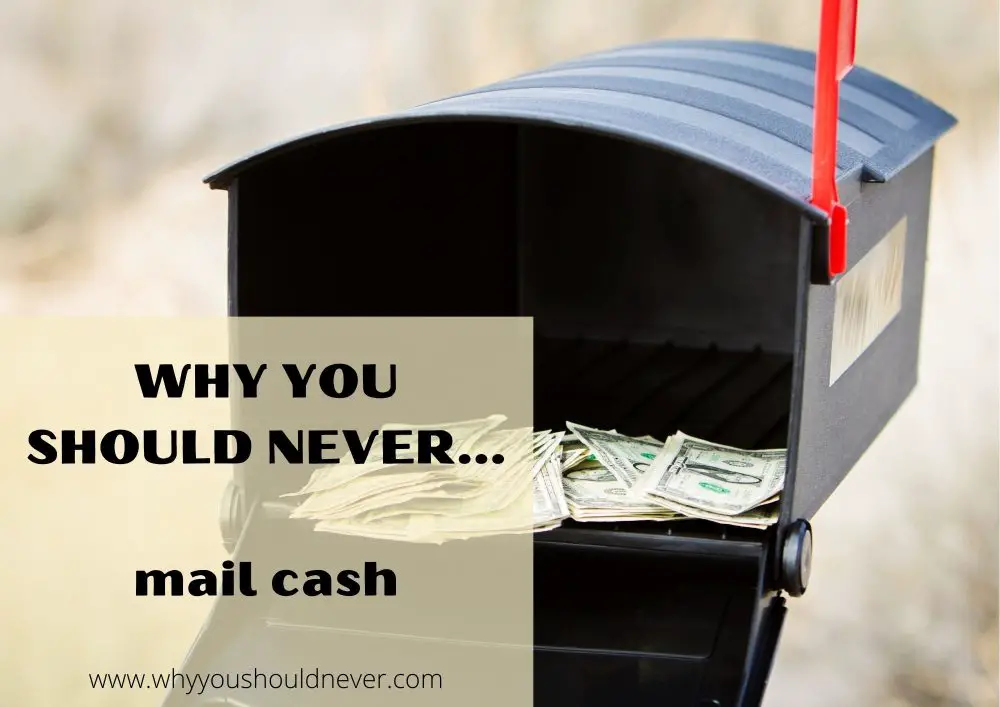![]()
Why You Should Never Mail Cash
We’re moving closer and closer to a cashless society, where everything we buy can easily be tracked and linked to us through digital payment systems. Physical money is gradually being phased out – in some places, cash isn’t even accepted!
Yet, there are still many people who do deal in cash, and use it as a means of paying people (cash in hand) or sending money to family and friends who don’t have bank accounts.
However, this is perhaps the worst way to send money to a person. A number of things could go wrong when using this method. This article will explore some of the pitfalls and talk about some of the safer alternatives available to you.
It’s not insured
When you send a money order or cashier’s check, there is some protection against loss. You can file a claim for the lost funds and get reimbursed by your bank if it was done through them.
Mailed cash that gets lost, on the other hand, has no such insurance, as it’s sent without ID or protection from an organization.
It’s untraceable
By mailing cash and not paying for parcel tracking, if it gets lost somewhere and doesn’t reach the intended recipient, you have no way of knowing where it ended up and who might have it.
With a bank transfer you have all of the recipient’s details plus digital proof of the transaction. So if you accidentally send money to the wrong account, you know exactly where your money went. This makes it easier to get it returned.
Easy for underpaid postal workers to steal it
Mailed cash is just sitting there, unprotected, for anyone to take. Although we like to think our mail is safe, this isn’t always the case.
According to this article by Business Insider, 1.7 million parcels go missing in the US every year, costing in excess of $25 million.
So where do they go, you might ask? Well, they certainly don’t vanish into thin air, I can tell you that much! The likelihood is that many of them are stolen, sometimes by opportunistic thieves, sometimes by postal workers looking to boost their incomes.
Your mailed cash could very easily be snatched and stolen by individuals with the means to scan what’s inside the parcel. And just like that, it’s gone forever, leaving you with no recourse. You’ll never know who took it.
Impossible to prove you sent it
If you’re buying something online, sending cash as payment through the mail is a terrible idea. There will be no proof you actually sent it, which could mean that the recipient claims they never received it, whether true or false.
This is an easy way to get scammed.
What is the best way to send money?
There are many ways to send money, nationally and internationally, that offer you greater protections and give you peace of mind. Be advised, though, that when sending money with most of these methods, you give up some of your privacy.
Money orders
These are like cashier’s checks, but you write them for the amount of money, rather than using a bank account.
Wire transfers
This is when your bank electronically sends your funds to another person’s bank account. It works best if both banks use SWIFT or IBAN messages and procedures.
Paypal
Connected to your bank account, you can send multiple currencies and won’t be stuck with unfavorable exchange rates. When sending money to family and friends, it’s free and takes mere minutes to reach their Paypal account.
Cryptocurrency
This is still very new, but over the next few years you’ll see this payment method rise in popularity and replace other, clunkier methods.
It’s fast, can be super cheap to transfer very large sums of money, there are no annoying exchange rates, and you can send completely anonymously without ever having to set up an account and give over sensitive information.
Conclusion
You should always seek the safest option to send your hard-earned cash to others, and sending cash via the mail is not it. Technology has made it so that you don’t need to rely on those antiquated, unsafe methods any longer.
Don’t cut corners in the interests of saving time, be safe and send funds in a way that makes everything traceable and insurable.
